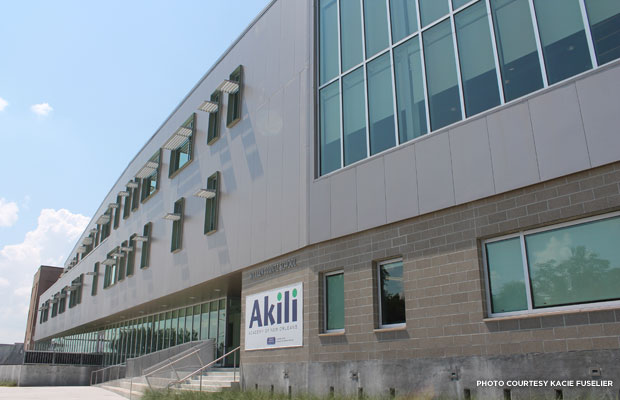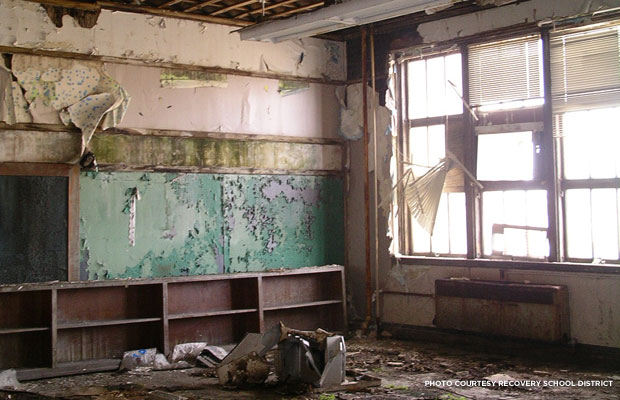Desegregation Landmark in New Orleans Again Offers Education -- and Healing

The William Frantz Elementary, now Akili Academy, in New Orleans' upper 9th Ward after restoration
On November 14, 1960, 6-year-old Ruby Bridges started her first day at the William Frantz Elementary School in New Orleans’ Upper 9th Ward. As one of the first children to integrate public schools in the city, she was escorted to the building by federal marshals through throngs of hostile protestors.
“I remember turning onto the street. I saw barricades, and police officers, and just people everywhere,” Bridges recalled in a PBS documentary that aired in November. “When I saw all of that, I immediately thought that it was Mardi Gras. I had no idea that they were here to keep me out of the school."
“You can say Little Rock was the first city in the South [to integrate its schools], but New Orleans was the first city in the Deep South,” said Sam Collins of the Ruby Bridges Foundation, an organization dedicated to confronting the problems of poverty, racism, and unequal education opportunities.

Students learn in new state-of-the-art classrooms in the same school building where Ruby Bridges helped to end school segregation in New Orleans.
The moment was recaptured in 1963 by Norman Rockwell in his painting “The Problem We All Live With.”
After Bridges entered William Frantz Elementary, white protestors flooded the school to remove their children -- more than 500 in all. She spent much of her first year at William Frantz in a classroom with no other peers. It wasn’t until the following school year that the school was fully integrated.
Despite the efforts of Bridges, who fought to save the building and even get it listed on the National Register of Historic Places, by 2005 the school was threatened with closure by the public school district. Then, in August of that year, Hurricane Katrina arrived, bringing with it roughly 5 feet of flooding on the building’s first floor and extensive water damage above.

Ruby Bridges visits students at the restore William Frantz Elementary School/Akili Academy.
However, the storm that leveled much of the city and did so much damage to the building also created an opportunity for its revival.
After Katrina, the school, along with 113 others, fell under the oversight of Louisiana’s Recovery School District. As part of the School Facilities Master Plan for Orleans Parish, which is investing $1.8 billion in the area’s primary and secondary education buildings, the school received a major overhaul.
An architect was hired in the spring of 2008 and the $23.5 million rehabilitation project broke ground in the fall of 2010. The site’s main building received rehabilitation of period-style features and replacement of hardwood floors and windows. Bridges’ own first-year classroom was also restored with period-appropriate furniture.
By August 2013, William Frantz Elementary was home to the new Akili Academy, a public, open-enrollment charter school that currently hosts grades K-6, with plans to expand to K-8 in the coming years.

The William Frantz Elementary School after flooding and damage from Hurricane Katrina in 2005.
“There’s definitely a lot of work and rebuilding left to do [from the storm] in the Upper 9th Ward,” said Kacie Fuselier from Crescent City Schools, which manages Akili Academy. “We’re proud to be a part of that process. They say that schools help to stabilize neighborhoods and our hope is that our being there will help to lead some people home.”
The school uses Bridges’ story as an integral part of their curriculum and everyday learning, and keeps the classroom she spent her first year in open for visitors, special programs, and events. They’re also working to cultivate a stronger relationship with Bridges herself, who recently visited the school.
“[Our connection to this history] is very significant to us,” Fuselier said. “We recognize the symbolism of us returning these children to that school. And not only do the faculty and staff really cherish it, but so do the students.”



